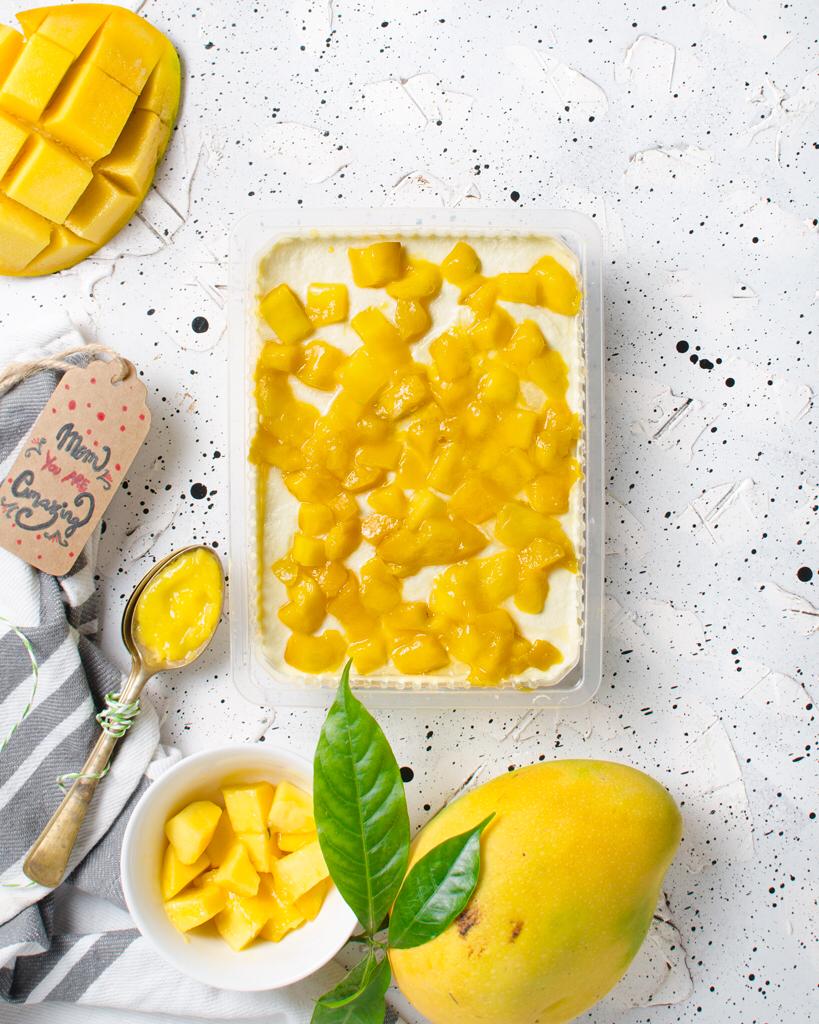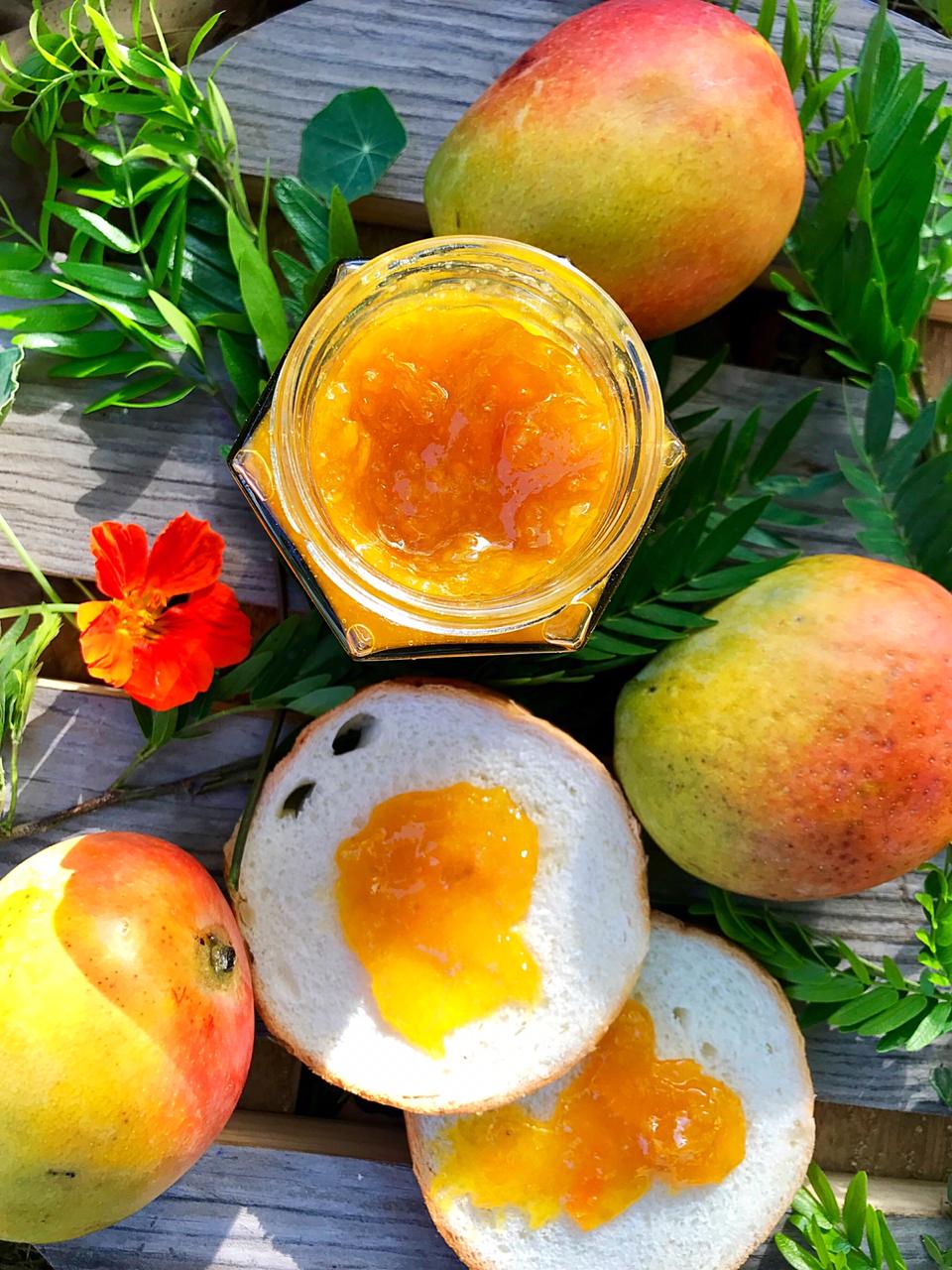
If you’re a fan of luscious mangoes and sweet treats, then Mango Cake is a dessert that will truly captivate your taste buds. Packed with the tropical flavors of ripe mangoes, this delightful cake is moist, flavorful, and perfect for any occasion. In this post, we’ll explore the art of making a scrumptious Mango Cake from scratch, provide tips on selecting the best mangoes, and guide you through the step-by-step process. We’ll also offer creative ideas to take your cake to the next level, including a no-bake version and alternatives for those who don’t have an oven. Get ready to savor the divine taste of Mango Cake! 🥭🍰🌿
Why Mango Cake? 🥭🍰 Mango Cake is a fantastic way to celebrate the sweetness and vibrant flavors of mangoes in a delightful dessert form. The natural sweetness of ripe mangoes adds a unique twist to a classic cake, creating a moist and fruity flavor profile that is both refreshing and indulgent. Whether you’re hosting a special occasion, planning a birthday party, or simply craving a tropical treat, Mango Cake is sure to impress both your eyes and taste buds.
Crafting a Scrumptious Mango Cake 🥭🍰🌿 Now, let’s dive into the process of making a delectable Mango Cake:
Ingredients:
For the Cake:
- 2 cups all-purpose flour
- 1 1/2 teaspoons baking powder
- 1/2 teaspoon baking soda
- 1/4 teaspoon salt
- 1/2 cup unsalted butter, softened
- 1 cup granulated sugar
- 2 large eggs
- 1 teaspoon vanilla extract
- 3/4 cup mango puree (made from ripe mangoes)
- 1/4 cup milk
For the Mango Buttercream Frosting:
- 1/2 cup unsalted butter, softened
- 3 cups powdered sugar
- 1/4 cup mango puree
- 1 teaspoon vanilla extract
Instructions:
- Preheat your oven to 350°F (175°C). Grease and flour two 9-inch round cake pans or line them with parchment paper.
- In a medium bowl, whisk together the all-purpose flour, baking powder, baking soda, and salt. Set aside.
- In a large mixing bowl, cream together the softened butter and granulated sugar until light and fluffy. You can use an electric mixer or do it manually with a wooden spoon.
- Add the eggs, one at a time, beating well after each addition. Stir in the vanilla extract.
- Gradually add the dry flour mixture to the creamed butter and sugar, alternating with the mango puree and milk. Begin and end with the dry ingredients, mixing just until combined after each addition. Be careful not to overmix the batter.
- Divide the batter equally between the prepared cake pans and smooth the tops with a spatula.
- Bake in the preheated oven for approximately 25-30 minutes, or until a toothpick inserted into the center of the cakes comes out clean.
- Remove the cakes from the oven and let them cool in the pans for about 10 minutes. Then, transfer them to a wire rack to cool completely.
- While the cakes are cooling, prepare the Mango Buttercream Frosting. In a mixing bowl, beat the softened butter until creamy. Gradually add the powdered sugar, mango puree, and vanilla extract, and continue to beat until smooth and fluffy.
- Once the cakes are completely cooled, place one cake layer on a serving plate. Spread a generous amount of Mango Buttercream Frosting on top. Place the second cake layer on top and frost the entire cake with the remaining frosting.
- For an extra touch, you can decorate the cake with mango slices, edible flowers, or a sprinkle of toasted coconut.
- Slice and serve the Mango Cake, and enjoy the tropical bliss with every bite!
No-Bake Mango Cake Variation 🍓🌿 If you prefer a no-bake version of Mango Cake, you can try this alternative method:
Ingredients:
For the Crust:
- 2 cups crushed graham crackers or digestive biscuits
- 1/2 cup melted butter
For the Filling:
- 2 cups mango puree (made from ripe mangoes)
- 1 cup heavy cream, chilled
- 1/2 cup powdered sugar
- 1 teaspoon vanilla extract
- 1 tablespoon gelatin (dissolved in 2 tablespoons of warm water)
For the Topping:
- Fresh mango slices or diced mangoes
Instructions:
- In a bowl, combine the crushed graham crackers or digestive biscuits with melted butter. Mix well until the crumbs are evenly coated.
- Press the crumb mixture into the bottom of a springform pan or a deep dish to form the crust. Place it in the refrigerator to set while you prepare the filling.
- In a mixing bowl, whip the chilled heavy cream until it reaches soft peaks. Add the powdered sugar and vanilla extract, and continue whipping until stiff peaks form.
- Gently fold in the mango puree and dissolved gelatin into the whipped cream until well combined.
- Pour the mango filling over the prepared crust and smooth the top with a spatula.
- Place the cake in the refrigerator for at least 4 hours, or until it is set and firm.
- Before serving, garnish the top of the cake with fresh mango slices or diced mangoes.
- Slice and serve the refreshing No-Bake Mango Cake to enjoy the tropical flavors in every bite!
Alternative for Those Without an Oven 🍓🌿 If you don’t have an oven, you can still enjoy a delightful Mango Cake with this alternative method:
Ingredients:
- 2 cups all-purpose flour
- 1 1/2 teaspoons baking powder
- 1/2 teaspoon baking soda
- 1/4 teaspoon salt
- 1/2 cup unsalted butter, softened
- 1 cup granulated sugar
- 2 large eggs
- 1 teaspoon vanilla extract
- 3/4 cup mango puree (made from ripe mangoes)
- 1/4 cup milk
Instructions:
- In a mixing bowl, whisk together the all-purpose flour, baking powder, baking soda, and salt.
- In a separate bowl, cream together the softened butter and granulated sugar until light and fluffy. Add the eggs, one at a time, and beat well after each addition. Stir in the vanilla extract.
- Gradually add the dry flour mixture to the creamed butter and sugar, alternating with the mango puree and milk. Mix until well combined.
- Grease a microwave-safe dish or baking pan with butter or cooking spray.
- Pour the batter into the greased dish and smooth the top with a spatula.
- Place the dish in the microwave and cook on medium power for about 6-8 minutes, or until the cake is set and a toothpick inserted into the center comes out clean.
- Remove the cake from the microwave and let it cool in the dish for a few minutes. Then, carefully transfer it to a wire rack to cool completely.
- Once the cake is cooled, you can proceed to frost it with Mango Buttercream Frosting or enjoy it as is.
Tips for Selecting Ripe Mangoes 🥭🌟 Selecting ripe and flavorful mangoes is key to achieving the best taste in your Mango Cake. Here are some tips to help you choose the perfect mangoes:
- Color and Texture: Look for mangoes with vibrant hues and a slightly soft texture when gently pressed. Avoid mangoes that are too firm or too mushy.
- Aroma: Smell the stem end of the mangoes. A ripe mango should have a sweet and fragrant aroma.
- Varieties: Depending on availability in your region, choose mango varieties such as Alphonso, Ataulfo, or Kent for their rich sweetness and smooth texture, which work wonderfully in cakes.
Creative Ideas to Elevate Your Mango Cake 🌈🥭🍰 While a simple Mango Cake is already delightful, you can explore some creative ideas to take it to the next level:
- Mango Cream Cheese Frosting: Instead of Mango Buttercream Frosting, try a luscious cream cheese frosting with a hint of mango flavor. Combine softened cream cheese, powdered sugar, mango puree, and a touch of vanilla extract for a tangy and creamy frosting.
- Mango and Coconut Cake: Add shredded coconut to the cake batter for an extra tropical twist. The combination of mango and coconut creates a delightful flavor combination that transports you to a sunny paradise.
- Mango Mousse Filling: Fill the cake layers with a fluffy mango mousse. Prepare a mango mousse by folding whipped cream and mango puree together, then layer it between the cake layers for an airy and fruity filling.
- Mango Coulis Drizzle: Drizzle a homemade mango coulis over the cake for an extra burst of mango flavor. Simply blend ripe mangoes with a touch of sugar and a squeeze of lemon juice until smooth. Strain the mixture to remove any fibers and seeds, and drizzle it over the frosted cake.
- Mango and White Chocolate Ganache: Create a white chocolate ganache infused with mango puree. Combine white chocolate and mango puree, and melt them together to create a creamy and luxurious topping for your Mango Cake.
Join Us for More Culinary Adventures! 🍽️🌍 If you’re passionate about exploring new flavors and connecting with fellow food enthusiasts, we invite you to join our vibrant community of foodies! Discover new recipes, share your culinary creations, and engage in conversations about all things food. Join our secret Facebook group, Eatlo, by visiting https://www.facebook.com/groups/eatlo and be a part of a community that celebrates the joy of cooking and the love for delicious food.
Conclusion Mango Cake is a delightful dessert that showcases the tropical flavors of ripe mangoes in a moist and flavorful cake. By following the simple steps outlined in this recipe, you can create your very own Mango Cake that will impress your family and friends. Whether you choose the traditional baked version, the refreshing no-bake variation, or the alternative method for those without an oven, you can indulge in the irresistible delight of Mango Cake and savor the sweetness of mangoes with every bite! 🥭🍰🌿










